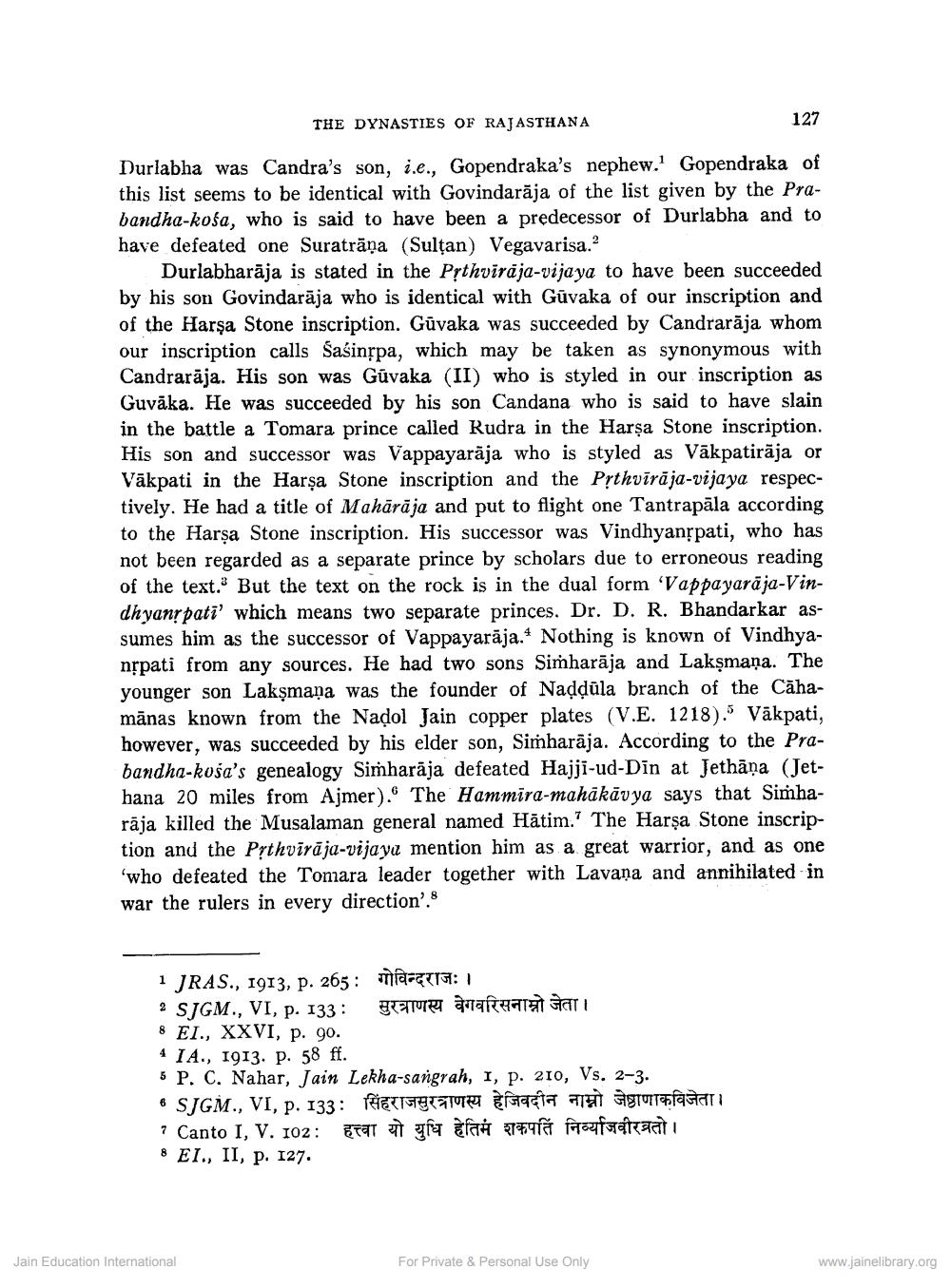________________
THE DYNASTIES OF RAJASTHANA
127
Durlabha was Candra's son, i.e., Gopendraka's nephew. Gopendraka of this list seems to be identical with Govindarāja of the list given by the Prabandha-kośa, who is said to have been a predecessor of Durlabha and to have defeated one Suratrāņa (Sultan) Vegavarisa.
Durlabharāja is stated in the Pșthviraja-vijaya to have been succeeded by his son Govindarāja who is identical with Gūvaka of our inscription and of the Harşa Stone inscription. Gūvaka was succeeded by Candrarāja whom our inscription calls Saśinspa, which may be taken as synonymous with Candrarāja. His son was Gūvaka (II) who is styled in our inscription as Guvāka. He was succeeded by his son Candana who is said to have slain in the battle a Tomara prince called Rudra in the Harşa Stone inscription. His son and successor was Vappayarăja who is styled as Vākpatirāja or Vākpati in the Harsa Stone inscription and the Pythvīrāja-vijaya respectively. He had a title of Mahārāja and put to flight one Tantrapāla according to the Harșa Stone inscription. His successor was Vindhyanfpati, who has not been regarded as a separate prince by scholars due to erroneous reading of the text. But the text on the rock is in the dual form 'Vappayarā ja-Vindhyany pati' which means two separate princes. Dr. D. R. Bhandarkar assumes him as the successor of Vappayarāja. Nothing is known of Vindhyanộpati from any sources. He had two sons Simharāja and Lakşmaņa. The younger son Laksmana was the founder of Naddala branch of the Cähamānas known from the Nadol Jain copper plates (V.E. 1218). Väkpati, however, was succeeded by his elder son, Simharāja. According to the Prabandha-kośa's genealogy Simharāja defeated Hajji-ud-Din at Jethāņa (Jethana 20 miles from Ajmer). The Hammira-mahākāvya says that Simharāja killed the Musalaman general named Hātim." The Harsa Stone inscription and the Pythvirāja-vijaya mention him as a great warrior, and as one 'who defeated the Tomara leader together with Lavana and annihilated in war the rulers in every direction'.S
1 JRAS., 1913, p. 265: CET15: 2 SJGM., VI, p. 133 : game anafuata 8 El., XXVI, p. 90. 4 I A., 1913. p. 58 ff. 5 P. C. Nahar, Jain Lekha-sangrah, 1, p. 210, Vs. 2-3. & SJGM., VI, p. 133: Hetterature tracta FI grupafasan ? Canto I, V. 102: Tata ra afai 749fá faraufsatraat 8 EI., II, p. 127.
Jain Education International
For Private & Personal Use Only
www.jainelibrary.org




